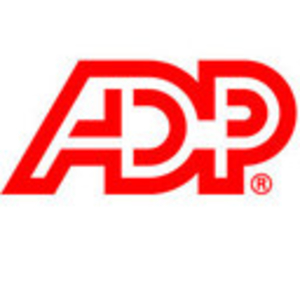What is our primary use case?
Our primary use case is payroll processing. We have it regulated to process remuneration, salaries, bonuses, and things like that. As a tool, it can also be used to track other benefits like paid time off, sick pay, shift differentials, and similar actions.
How has it helped my organization?
The way that ADP helped us improve our organization is by making the payroll process clean and efficient because if you make a mistake there, you're in big trouble.
What is most valuable?
I really love the report writer capability. It's easy to use, user-centric, and you do not have to involve IT support in writing reports. You can write the reports yourself. As long as you know the data layouts and what you're looking for, it's very, very straightforward. It is so much simpler than any of the other payroll processing software packages. With respect to doing customized reporting, this is a top-notch product.
What needs improvement?
I believe that the international payroll aspect needs to be improved. ADP has very limited ability in other countries. For example, they do the United States and Canada, but not most of Europe. ADP won't go to that market because of all the different rules and laws. It's just too complicated.
In the next release, I would like to see the interface become much more seamless. Right now, you have to extract data and make a payroll JE. If they could automate that process to where the data would automatically extract and then integrate itself into a GL in whatever platform that may be, for example Oracle or NetSuite, that would be a great benefit to the company.
For how long have I used the solution?
I have been using the ADP Workforce solution for about 10 years.
What do I think about the stability of the solution?
I would rate the stability of ADP Workforce Now a 10, on a scale from one to 10, with one being the worst and 10 being the best.
What do I think about the scalability of the solution?
It's quite scalable. The only inputs that ADP really needs are your master data and your regular time. But other than that, it's just processing the data, the payroll data to the extracts. It's not scalable for a multinational company. As I said, they don't do the international community very well. I know that they work through third parties to do that. So there's nothing within the Workforce Now product that will accommodate, like say doing business in the Netherlands versus doing business in Japan versus doing business in Taiwan. It just does not have that capability.
Currently, there are about 530 employees in our organization using this solution.
How are customer service and support?
I found their technical support to be highly responsive and very helpful.
Which solution did I use previously and why did I switch?
Previously, we had a different version of ADP that we were using, so the upgrade was to Workforce Now. But I have worked in environments where we would say went from Ceridian to our TriNet. Both were very incompatible in terms of reporting capability, in terms of support. Not at all on par with ADP Workforce Now.
How was the initial setup?
In terms of how difficult it is to implement ADP Workforce, I would rate this process a 10, on a scale from one to 10, with one being the most difficult and 10 being the easiest.
It depends on how you approach the implementation. You want to have a clean cutoff from your old system. Ideally, you'd want to do it so it cuts off and over into the new calendar year or a fiscal year. So you have a clean cutoff of reporting, but as long as you plan the implementation right, it is really literally one of the easiest software implementations I've ever done.
What about the implementation team?
There's absolutely no reason to use a third-party integrator for ADP products. They have a very dedicated staff that will help during the implementation with the integration of the baseline data, like your HRS master data. But, once you get the master data in, it's just making sure that you run your test cases and you come out with the same answer as your old system. I wouldn't even recommend running old and new and parallel.
For organizations of medium size and up to $100 million, I would say you'd need one or two people doing the implementation easily.
As long as you have a good cutoff, as long as you have full integration of your master data and it's correct, and as long as you're running your test cases verified through examining your payroll extracts, then it can't go wrong.
What was our ROI?
I can definitely see the ROI and can say that it's worth the money. Enhanced reporting is a very user-centric product. With it, you don't have to involve your IT team. This means that you do not have to put in the time and money to educate them or worry about what they are doing as part of the implementation. It could be handled by the users. So that makes it very easy to use.
What's my experience with pricing, setup cost, and licensing?
They're definitely not the cheapest and they adjust their pricing based on the number of employees and the size of your company. It is very much a product that is titrated to the company environment itself.
I would rate their pricing plan a nine, on a scale from one to 10, with one being the worst and 10 being the best.
It's a usage-based license, so the more employees you have, the more functionality you enable. It's kind of a multi-variable approach. It is employee-, usage- and capability-focused and very centric to those two things. If you have a very low employee base and very simple reporting, you're not going to spend a lot. But if you have a lot of employees and a more complex environment, you're going to pay more.
What other advice do I have?
They have a great all-over HR tool, their HRIS module. It integrates really well with other systems, other ERP systems, making it very much like a hub and bespoke kind of application. By that, I mean data integrates very easily from ADP into your ERP system, like your general ledger for reporting capability.
ADP Workforce Now is a cloud product and the deployment took around two and a half months.
The advice I can give to others when it comes to this product is just to make sure that you approach your implementation carefully. You should involve the ADP technical team that helps you with the implementation. You should raise issues when they come up immediately. You should have a good test case environment and make sure you test it before you do a full deployment and have a good cutoff between your old system and your new system to avoid any reporting irregularities.
Overall, I would rate the ADP Workforce Now solution a 10, on a scale from one to 10, with one being the worst and 10 being the best.
*Disclosure: My company does not have a business relationship with this vendor other than being a customer.




